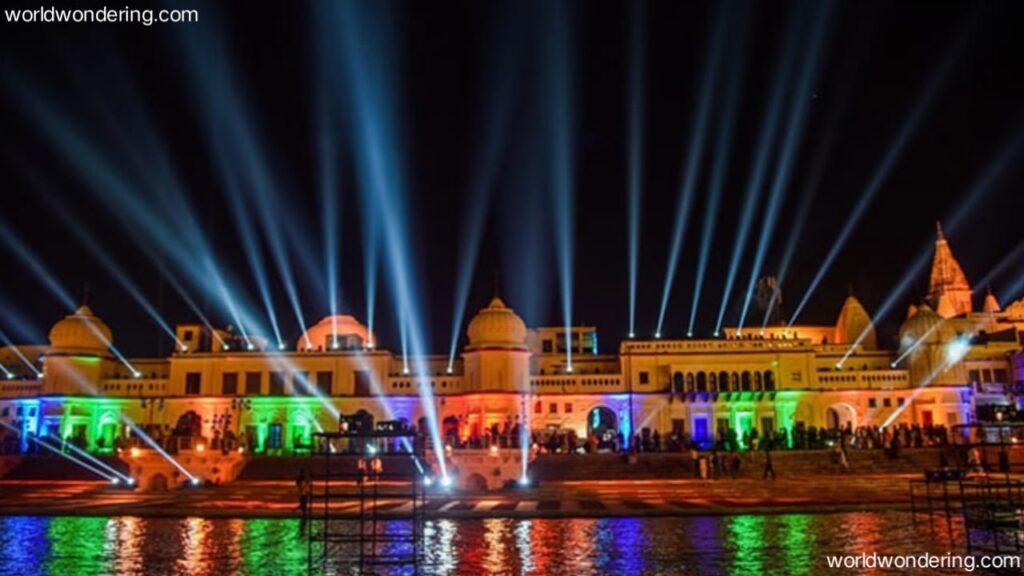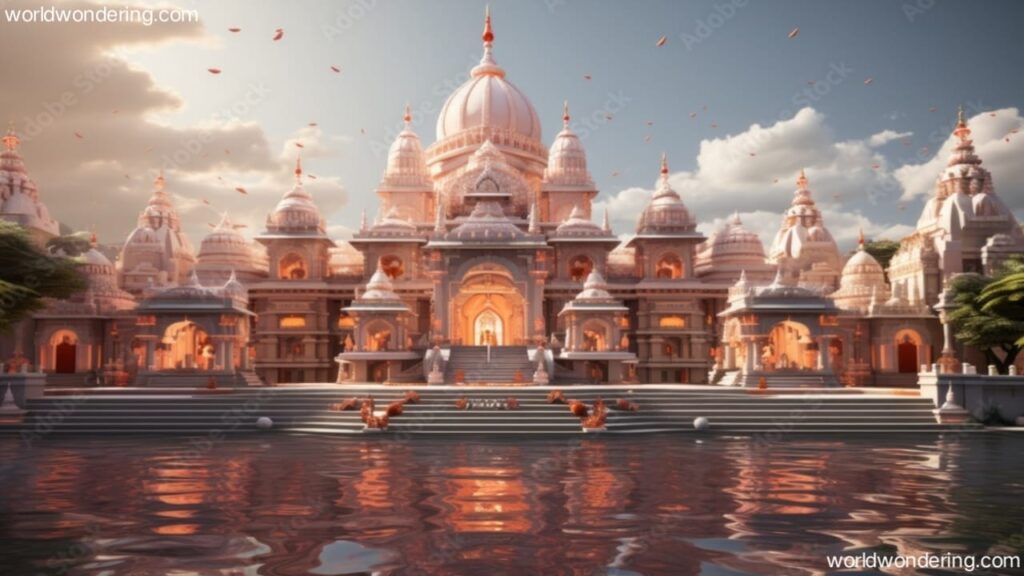Table of Contents
HISTORY OF AYODHYA :- Ayodhya is a name that needs no introduction. This beautiful city, included in the ancient religious cities of India, has its own special identity. It has its own glorious history and the present is also full of devotion and reverence. There are seven holy cities of Hindus i.e. Sapta Puri. Ayodhya is one of the cities i.e. this city is also considered a sacred place that gives salvation like Mathura, Dwarka, Varanasi, Haridwar, Ujjain and Kanchipuram. This city has the good fortune of being the birthplace of Lord Shri Ram. And that is why it holds as much importance as a pilgrimage site in itself. Situated on the banks of river Saryu, this city has always attracted pilgrims and tourists and has also been a place of special interest for historians because it The settlements, buildings and history remain a subject of research for them.

You must also know about this city of India which has a special place in history and religious texts and hence we have made today’s documentary so that you can know the history of Ayodhya and the rule here. great to do To get good information about the famous religious places and famous tourist places here, Ayodhya. So let’s start with a famous place of Uttar Pradesh state of India. The city is Ayodhya which is also known as Awadh. Ayodhya has been a city of Faizabad district and now the name of Faizabad district has also been changed to Ayodhya. Area of Ayodhya district It is 2522 square kilometers and is bordered by six districts of Uttar Pradesh, which is bordered on the north by Gonda and Basti districts, on the south by Amethi and Sultanpur districts and on the east and west by Ambedkar Nagar and 12 Banki districts.
HISTORICAL PLACE IN INDIA
The word Ayodhya has two meanings. According to one meaning, Ayodhya means that which cannot be won by war and the other meaning is a war i.e. where there is no war i.e. there is always prosperity and peace, that is Ayodhya and by the way it is true. Where Maryada Purushottam Ram rules, there can be no dearth of bravery and compassion, hence such a place can neither be defeated in war nor can conditions for war arise there. Ayodhya is mentioned in the epics Ramayana and Mahabharata. It is described that Lord Ram was born in this city of Ayodhya and it is also believed in the great epic Ramayana that this city was built by the gods. In the Atharva Veda, it has been described as the city of God and its prosperity is in heaven. It is said that the language of this city of Ayodhya is Awadhi.

The history of this language is also thousands of years old. It is said that Lord Ram also used to speak Awadhi language. According to Ramayana, Ayodhya was founded by Vaiva Swastha Manu, his son was Evak. Who established the Iwak dynasty and in this dynasty there were many glorious and great kings like Prithu, Harishchandra Bhagirath, Raghu Dashrath and Ram Raja Prithu was the first king who organized the earth, hence he was King Harishchandra, considered the first king of the earth, was a great donor and truthful king who left his kingdom and family and everything to follow the path of truth. Bhagiratha, through his severe penance, had brought down the river Ganga from heaven to the earth, while King Raghu Due to his bravery and brilliance, his dynasty came to be called Raghuvansh.
Dashrath’s son Shri Ram
Purushottam is also known as Dashrath’s son Shri Ram, who is considered to be the seventh incarnation of Lord Vishnu, who was born on earth to defeat the demons. Following the orders of his parents, he spent 14 years in exile and developed his moral and character strength. In our religious texts, King Ram has been described as an ideal man. It is told in Valmik ji’s Ramayana that the rule of King Ram in Ayodhya lasted for 11000 years and That is why this period is known as Ram Rajya. According to mythology, this Ram Rajya was a time when there was an atmosphere full of happiness and love in the entire state. Lord Ram was born on the Navami of Chaitra Shukla Paksha, which is known as Ram in India.It is celebrated as Navami and the pomp of this festival is very special in Ayodhya.

Similarly, when Lord Ram returned to Ayodhya after his exile, in this joy the entire Ayodhya was decorated with lamps and from there onwards Diwali festival started, which is one of the biggest festivals of India. According to Hindu mythology, Ayodhya used to be the capital of the ancient Kaushal Empire. The first king of this Kaushal Empire was Iksh Vaku i.e. the ancestors of King Ram. It is said that after Shri Ram His son Luv established Shravasti, which became the second capital of Kaushal state and later became the main pilgrimage site of Buddhism, while Shri Ram’s second son Kush got Ayodhya rebuilt, after this in the next 44 years. The existence of this dynasty continued for generations, from Shri Ramchandra to the Mahabharata of the Dwapar period and even after that.
Gautam Buddha and Mahavi Swami
There is a description of the Iwak dynasty of Ayodhya. A deep influence of Buddhism and Jainism is also seen in the religious city of Hindus, Ayodhya, because Gautam Buddha and Mahavi Swami had come and stayed in this city. According to Jain texts, this city is also the birthplace of five Tirthankaras Aadi Nath i.e. Rishabh Dev, Ajit Nath, Abhinandan Nath, Sumati Nath and Anantnath. Many Buddhist monasteries and stupas were built here during the Maurya period and Gupta period. In the Buddhist period, Ayodhya came to be known as Saket. During the 11th and 12th centuries, the Kannauj kingdom emerged in Ayodhya, which was called Awadh, after which it was part of the Delhi Sultanate. And came under the Mughal Empire in the 16th century. Maharaja Vikram Aditya built a huge temple at the birthplace of Lord Ram in Ayodhya with 84 pillars and seven Kalash.

This temple was damaged during the Mughal period. The year was 1528 when the Ram Temple, the center of religious faith, was demolished. Mir Banki, the commander of the Mughal emperor Babar, demolished it and in its place erected the structure of Babri Masjid. It was for the Mughals in India. It was only a small example of the expansion of its empire but it had a big role in hurting the sentiments of the Hindus of India. Not only this, with the construction of Babri Masjid, the religious sentiments of the Muslims of India also got attached to it. In 1992, a situation of conflict started forming between Hindus and Muslims, which started taking a terrible form with time. In the year 1992, when this disputed structure was demolished by the mob, a situation of tension was created in the country. The legal battle continued for years.
Sharda River in Uttarakhand and Flows in Uttar Pradesh
It is separated from the Sharda river in Uttarakhand and flows in Uttar Pradesh. It is believed that the confluence of Saryu and Ganga rivers was done by Bhagirath, the ancestor of Shri Ram. According to the Puranas, the Saryu river had come to the earth before Treta Yuga to see the childhood games of Lord Shri Ram. Therefore, this river had already arrived on the earth. This river has appeared from the eyes of Lord Vishnu. In ancient times, a demon Shankha Sur stole the Vedas and threw them into the sea. The demon also went into the sea and hid himself. To end him, Lord Vishnu took the form of a fish and went into the sea and destroyed him. After this, Lord Vishnu handed over the Vedas to Lord Brahma. While doing so, his eyes filled with joy and his eyes filled with joy. These precious tears of Lord Vishnu were shed by Brahma ji in the Mansarovar lake so that he could remain safe there.

After that, the mighty Vaivaswat took out the water and this stream itself came to be known as Saryu river. And it has become the center of faith of crores of people. Even today, Saryu river is considered to be the holy and sacred river of Ayodhya but there is a curse associated with it due to which its water cannot be offered in the temple nor can it be used in worship. If possible then what was this curse and who gave it? So Lord Bholenath gave this curse to river Saryu. When Lord Shiva became angry and probably very hurt, he says that Saryu is the river in which Lord Ram took water samadhi. Lord Shiva was very angry with this because he did not want Ram to leave this world.
Now in such a situation, his anger came out in the form of a curse on the river Saryu when he said that from now on Saryu Your water will not remain pure. No person should offer it in the temple.